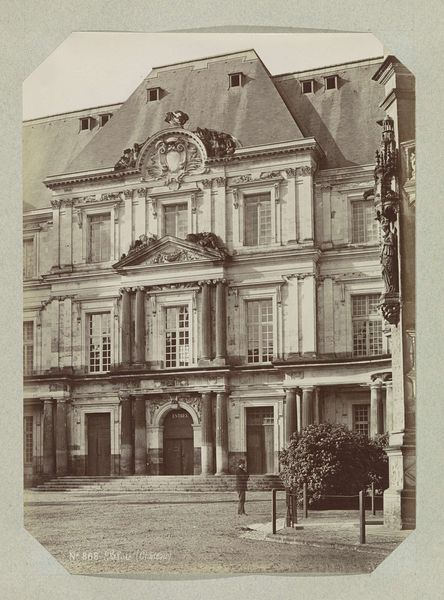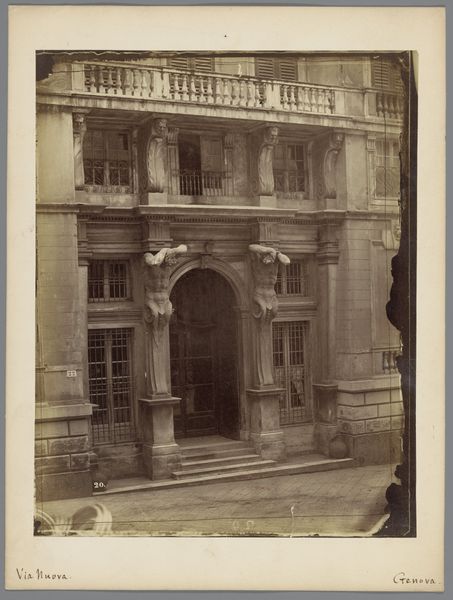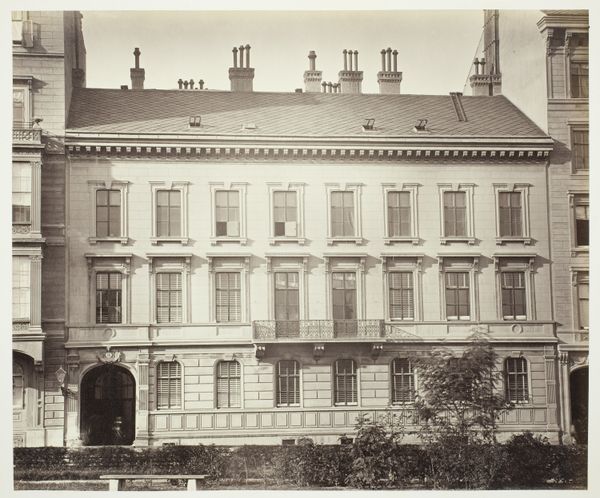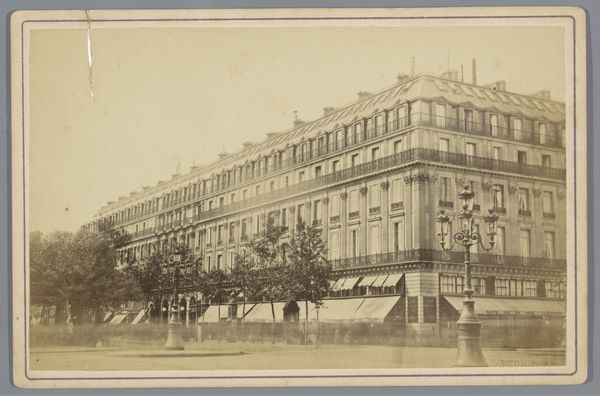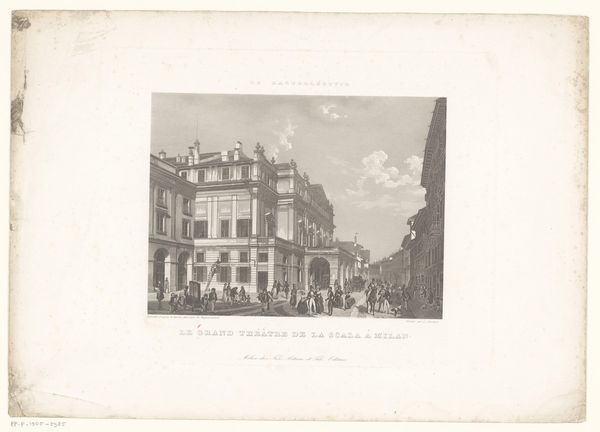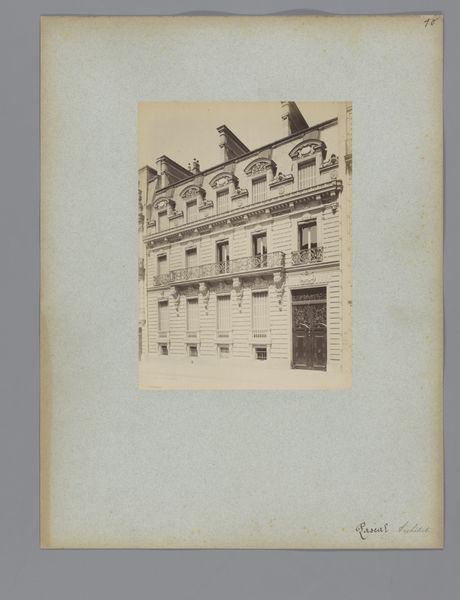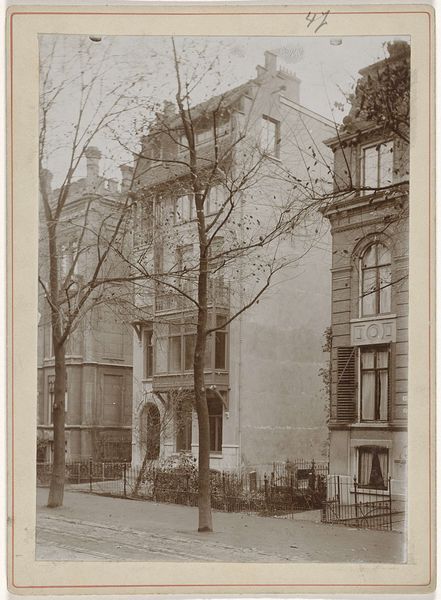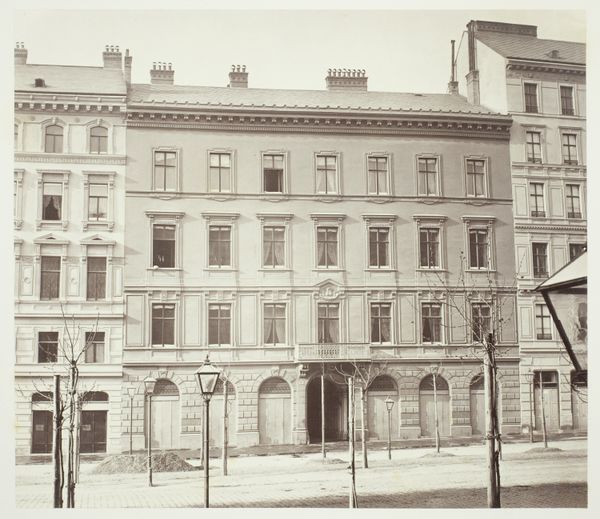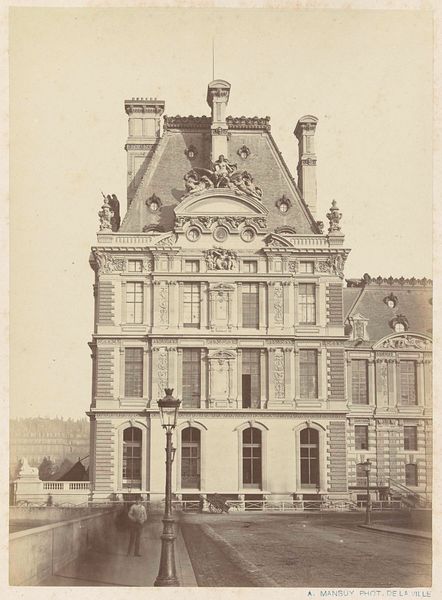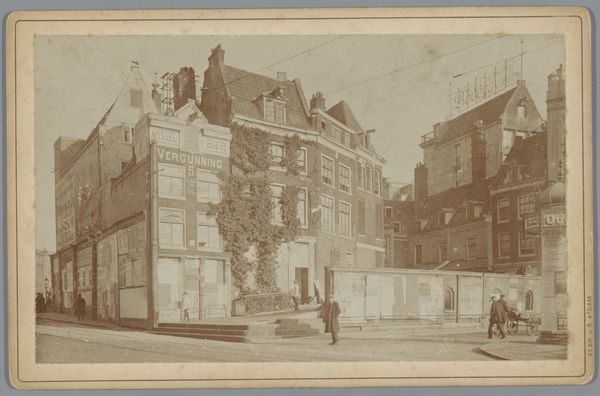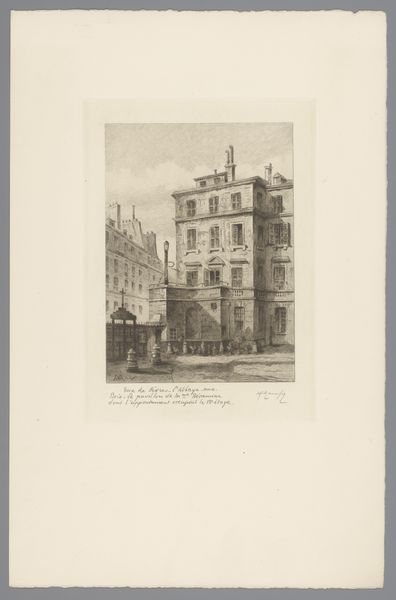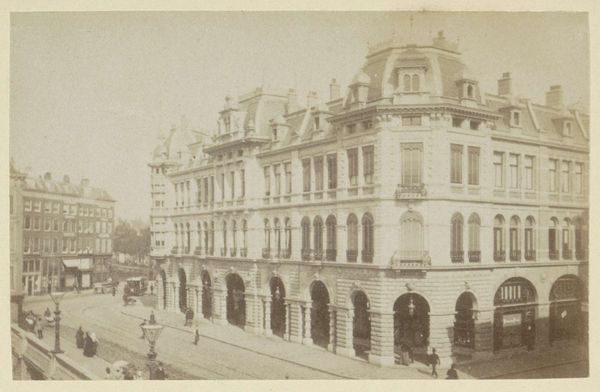
Vooraanzicht van de flat waarin Eugen Wachenheimer verbleef tijdens de vredesonderhandelingen in Versailles na het einde van de Eerste Wereldoorlog, als voorkant van een brief van Eugen aan zijn zus Liesel Zürndorfer Possibly 1919
0:00
0:00
Dimensions: height 140 mm, width 90 mm
Copyright: Rijks Museum: Open Domain
Editor: This gelatin silver print, possibly from 1919, shows the front of the building where Eugen Wachenheimer stayed during the Versailles peace talks. It’s called "Vooraanzicht van de flat waarin Eugen Wachenheimer verbleef…" It looks like it’s been reproduced as the front of a letter to his sister. What do you make of it? Curator: Well, immediately I'm drawn to the materiality of it - a utilitarian object, a gelatin silver print, repurposed as correspondence. It speaks to the means of production in post-war Europe; photography was becoming increasingly accessible, yet here it’s performing double duty. It is both a method of recording and a method of communication. Editor: Double duty, interesting. So the choice of photography as a material, as opposed to say, a sketch, means something more? Curator: Absolutely. Consider the social context. Versailles wasn't just about treaties; it was about rebuilding. This image, functioning as a letterhead, hints at the networks and infrastructures that were also being rebuilt. And consider how a building façade becomes part of someone’s identity in a time of upheaval. Do you see any evidence of labor here? Editor: Labor…besides the fact that the photograph had to be taken and developed? I guess you can see the signs of construction in the building itself. It’s a bit worn down. Curator: Precisely. The slight imperfections of the print, the worn façade of the building – they become tangible evidence of labor and of a society in the act of rebuilding. Editor: I see what you mean. Looking at it through the lens of materials and production really brings out a different dimension. I never would have thought about it this way at first glance! Curator: That’s the beauty of focusing on materiality, isn't it? It forces us to consider the context, the labor, the social implications woven into the very fabric of the artwork.
Comments
No comments
Be the first to comment and join the conversation on the ultimate creative platform.
